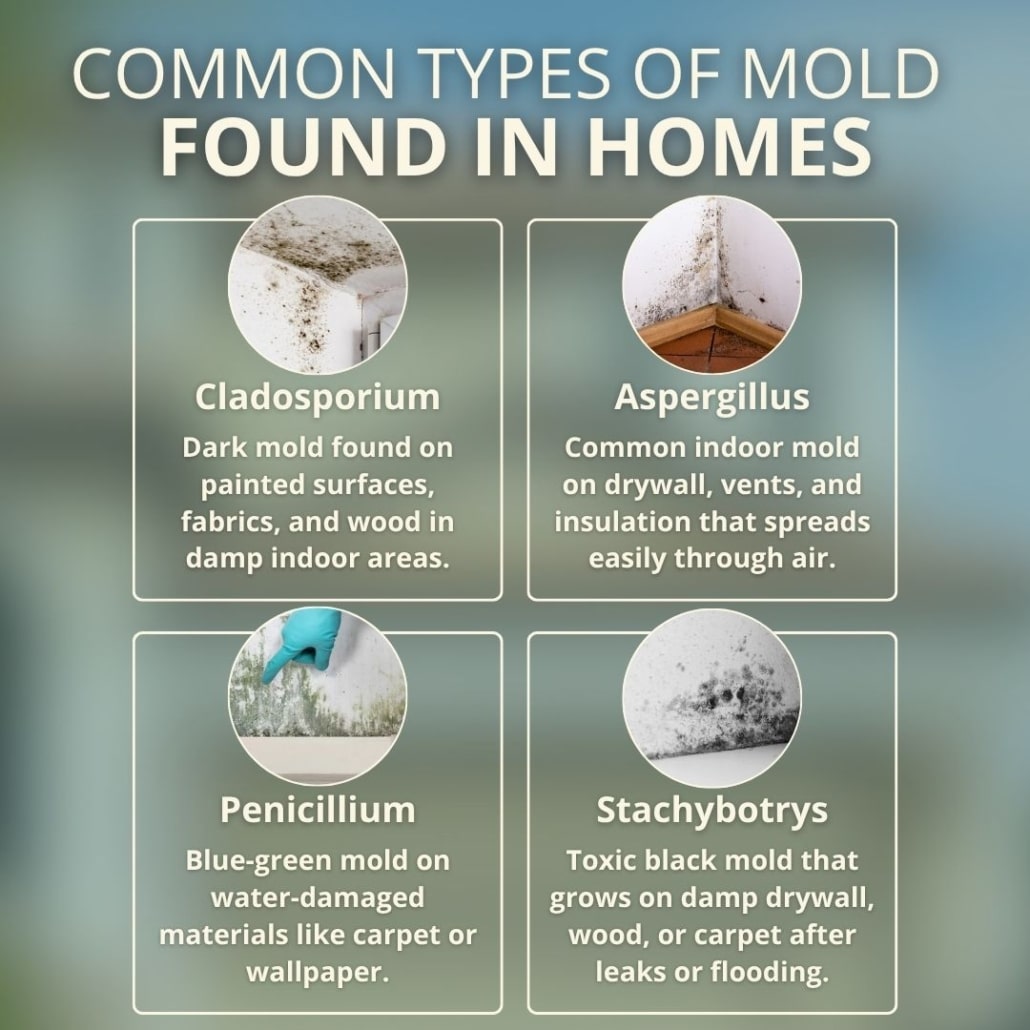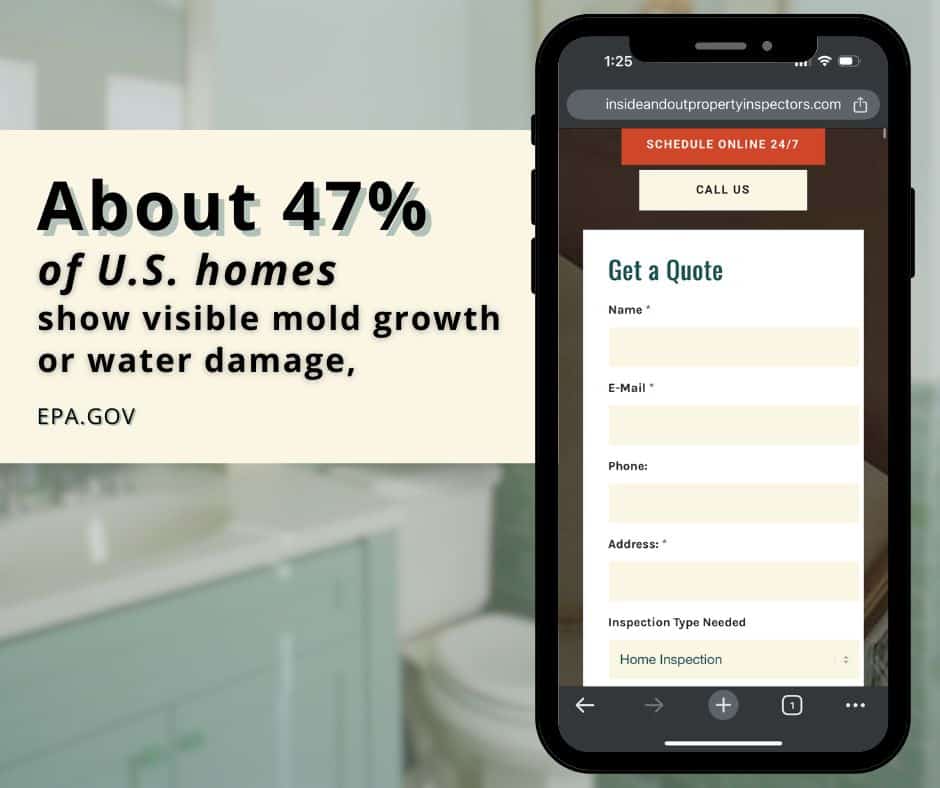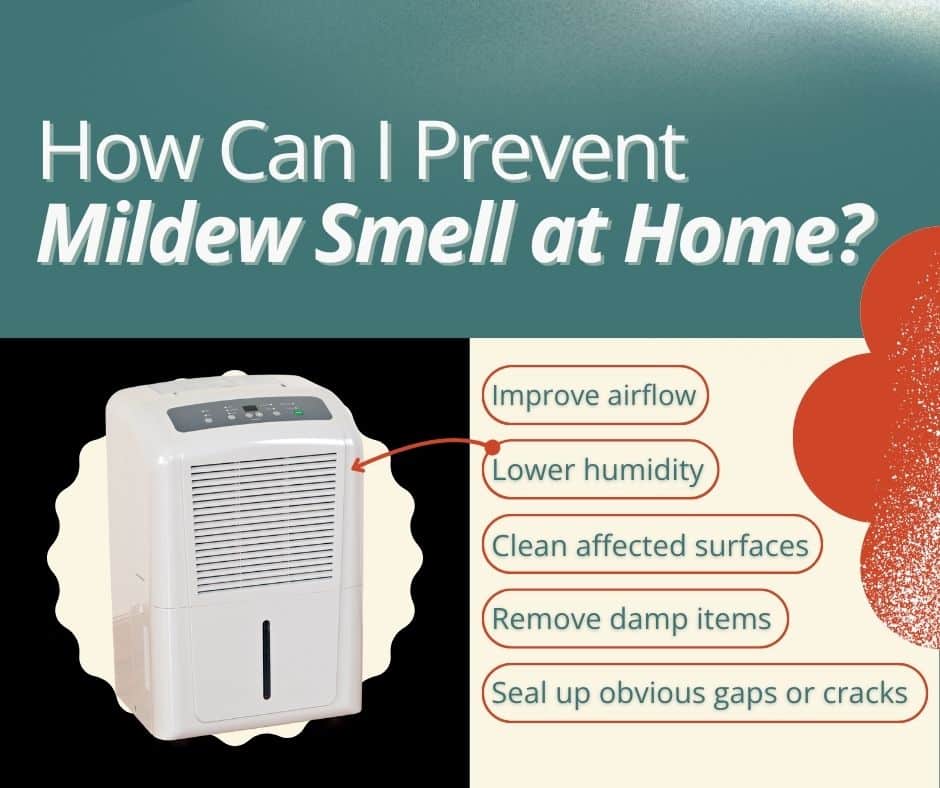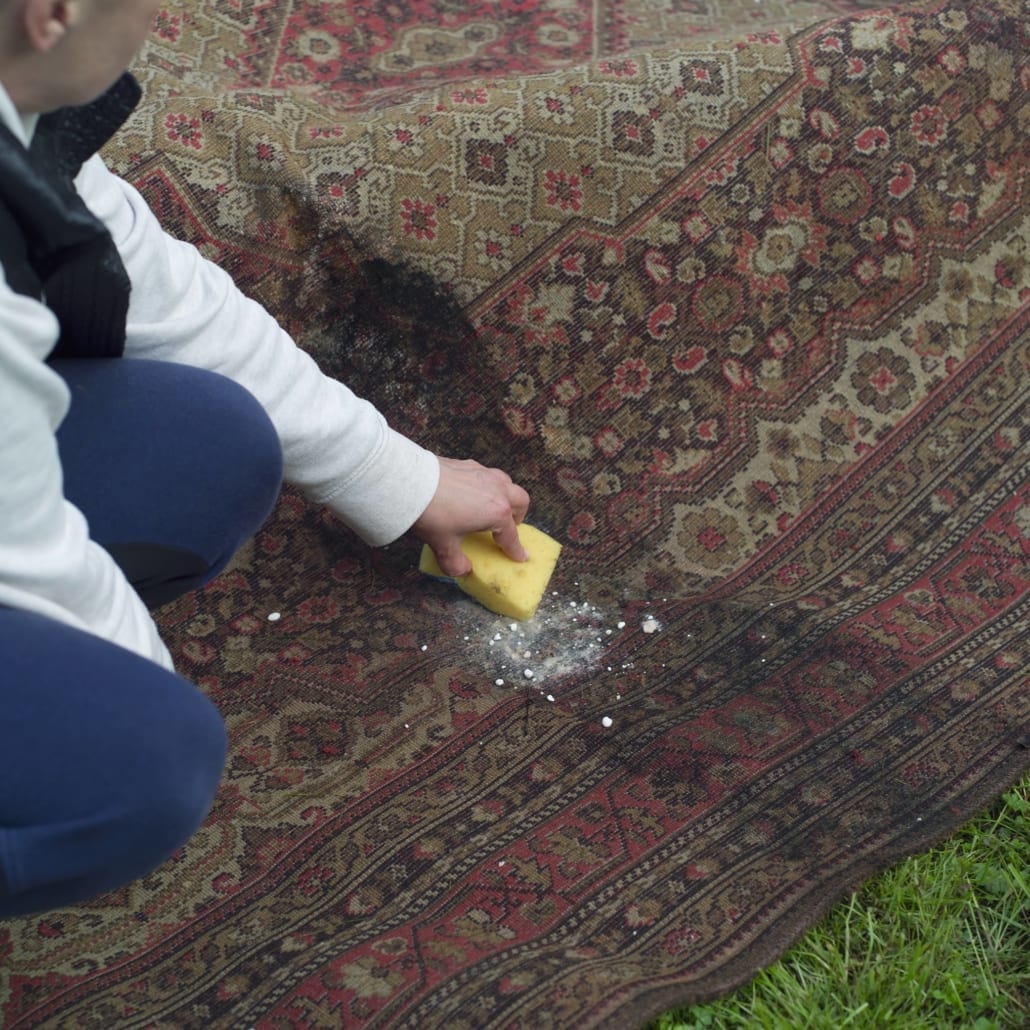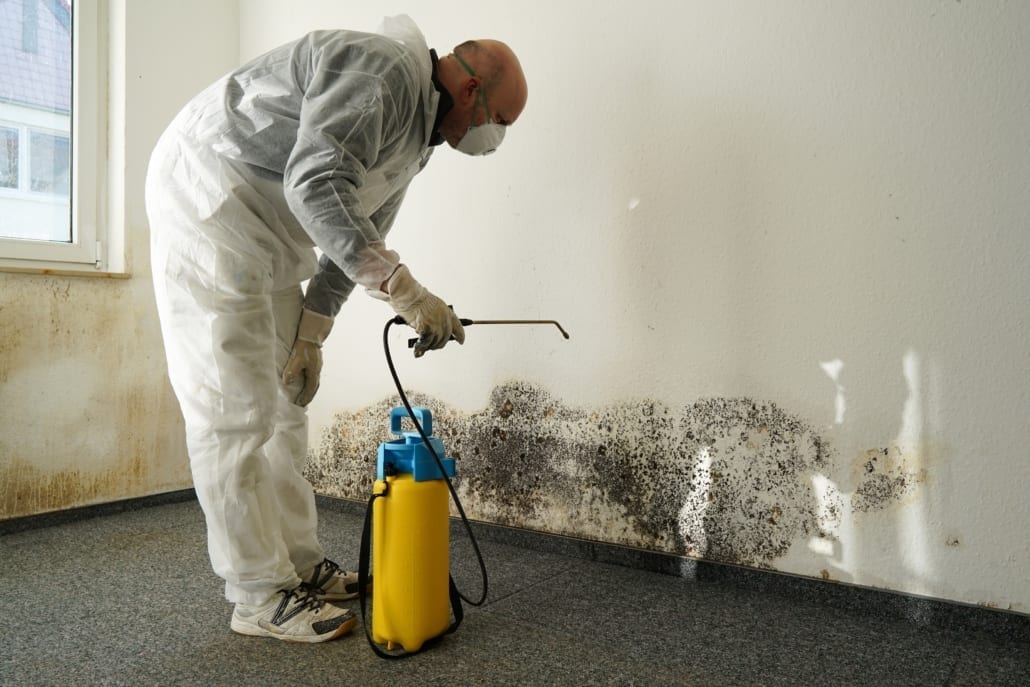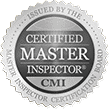An Inspector’s Take on Buying a House With Mold Issues
Discovering mold in a house you’re considering buying can raise instant red flags. It’s unsightly, can affect indoor air quality, and may signal larger moisture problems. But does mold automatically mean you should walk away?
The truth is, not always. Mold is common in humid climates like Jacksonville, Florida, and most homes have at least small amounts of it somewhere. What matters is understanding the extent of the issue and the underlying cause before finalizing a purchase.
This guide from Inside & Out explains what home buyers should know about mold, what an inspection can reveal, and when it’s time to bring in professional testing before closing.
Why Mold Is So Common in Florida Homes
Florida’s humidity creates the perfect environment for mold growth. Warm air meets cooler surfaces, producing condensation that allows mold spores to spread quickly.
According to the Environmental Protection Agency (EPA), mold can begin growing on damp materials within 24 to 48 hours. In coastal and high-humidity regions, even a minor plumbing leak or roof drip can create the right conditions for mold to thrive.
For Jacksonville homeowners, mold often develops in:
-
Bathrooms and laundry areas with poor ventilation
-
Around AC ducts or vents where condensation collects
-
Under sinks or behind kitchen appliances
-
Attics, crawl spaces, or basements after heavy rain
The key is identifying whether the issue is surface-level or structural, and that’s where professional inspection and testing make a difference.
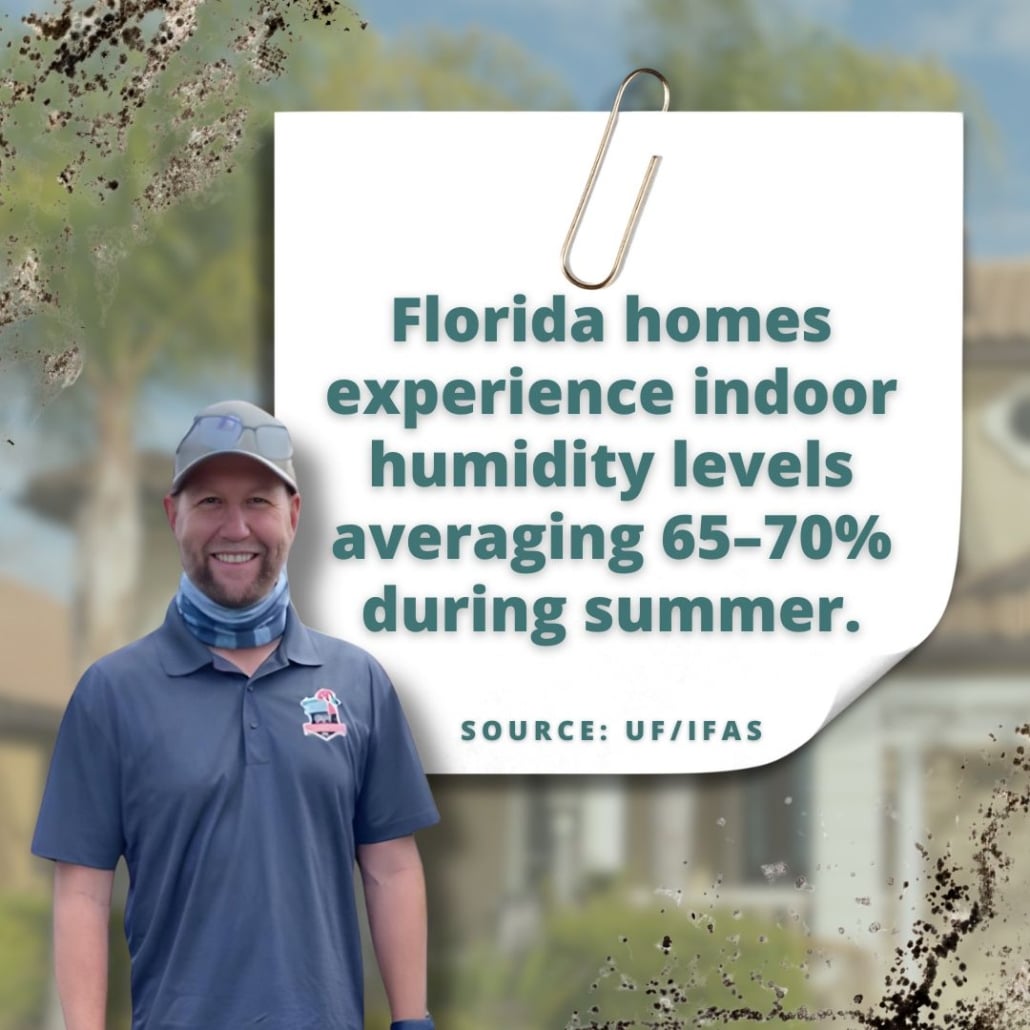
What a Home Inspector Looks for During a Mold Concern
When you schedule a home inspection, your inspector will look for visible signs of moisture damage and other conditions that may contribute to mold.
While Inside & Out Property Inspectors does not perform mold remediation, we are licensed and locally trusted to inspect, test, and document suspected mold problems.
This gives buyers valuable insight before deciding whether to move forward or request repairs.
Common Signs an Inspector Checks For:
-
Dark spots or fuzzy growth on drywall, baseboards, or ceilings
-
Musty or earthy odors, especially in enclosed areas
-
Warped flooring or bubbling paint
-
Past water damage around windows, doors, or roofing
-
Inadequate ventilation in bathrooms or attics
Inspectors use specialized tools like moisture meters, infrared cameras, and air sampling kits to determine if there are elevated mold spore levels or hidden growth.
Once the inspection and testing are complete, buyers receive a detailed report showing whether the mold is cosmetic, moderate, or significant enough to require further attention.
Types of Mold Commonly Found in Homes
Not all mold types are equally concerning, but any growth that indicates hidden moisture is worth investigating before buying the house.
Here are a few examples that inspectors commonly encounter in homes:
1. Cladosporium: A dark mold often found on painted surfaces, fabrics, or wood. It can appear green, brown, or black and thrives in damp air ducts and bathrooms.
2. Aspergillus: Common indoors, this mold often appears on drywall, insulation, or stored paper products. It spreads easily through air currents.
3. Penicillium: Recognized by its blue or green color, Penicillium grows on water-damaged materials and can spread rapidly in humid environments.
4. Stachybotrys (Black Mold): Often the most concerning to buyers, this mold thrives in constant moisture and typically appears on drywall, carpet backing, or wood framing.
Inspectors cannot diagnose health effects, but identifying the type of mold and where it’s growing helps determine the scope of cleanup needed.
When Mold Testing Makes Sense
Not every situation requires a full mold test, but it becomes valuable when:
-
You smell a musty odor, but see no visible mold
-
The home has a history of water damage or flooding
-
There is visible staining or discoloration that needs confirmation
-
You need documentation for a seller or insurance company
Inside & Out Property Inspectors offers mold inspections and testing, which gives you a clear, unbiased picture of what’s inside the home’s air and surfaces.
This process involves collecting samples from suspected areas and comparing them to normal indoor air levels. If the results show higher-than-average spore counts, buyers can use that information to negotiate remediation or repairs before closing.
How Mold Testing Protects Buyers
A professional mold test gives you more than just data; it gives you confidence in your decision before buying a house.
1. It Confirms Suspicion: DIY mold kits can miss airborne spores or produce false results. Professional testing uses controlled methods and certified lab analysis.
2. It Helps You Prioritize Repairs: Knowing where the problem starts allows you to address leaks, insulation issues, or ventilation gaps that caused the mold in the first place.
3. It Supports a Healthier Home Environment: Mold spores can spread quickly through air conditioning systems. Testing helps identify if spores are circulating in indoor air.
4. It Informs Future Maintenance Plans: Many Florida homeowners schedule mold testing every few years as part of routine home maintenance, especially after hurricane season or roof work.
Inside & Out Property Inspectors provides objective information so buyers and homeowners can make informed decisions about next steps without any sales pressure.
What to Do if Mold Is Found During Inspection
If your inspector confirms mold or moisture damage, don’t panic. Finding mold doesn’t automatically mean a deal-breaker. It simply means you need more information.
Here’s a realistic plan for next steps:
-
Review the Inspector’s Findings: The report will show where the mold is located and the likely cause, such as a leak or condensation problem.
-
Consult a Licensed Remediation Specialist: Since Inside & Out Property Inspectors focuses on inspection and testing only, we can refer you to qualified local professionals who specialize in mold removal.
-
Request Repairs or Credits from the Seller: Buyers can use the inspection report to negotiate remediation costs or closing credits before finalizing the purchase.
-
Re-test After Remediation (Optional but Recommended): A follow-up mold test confirms that the issue has been resolved and ensures safe air quality for your family.
Even serious mold problems can often be fixed with the right steps. The key is identifying them early with a professional inspection.
How Mold Can Affect a Home’s Value
Mold can impact property value in a few ways, depending on how extensive it is.
-
Minor Surface Mold: Typically does not affect value when cleaned properly.
-
Hidden or Structural Mold: May lower resale value until moisture issues are corrected.
-
Unaddressed Moisture Problems: Can lead to long-term structural damage and future inspection red flags.
For Jacksonville buyers, knowing whether a property has a manageable issue or a major moisture concern helps protect your investment. A clear inspection and test report gives you leverage during negotiations and peace of mind about what you’re buying.
Other Related Questions
How does a mold inspection differ from a general home inspection?
A general home inspection identifies visible moisture or damage, while a mold inspection includes testing that measures air quality and confirms contamination levels. This connects naturally to Inside & Out’s specialty inspection services that help buyers identify hidden risks.
Can older homes in Florida have more mold problems?
Yes. Aging ventilation systems and porous building materials can hold moisture longer, increasing mold risk. Posts discussing HVAC inspections and attic ventilation can help readers understand how these issues develop.
Is it worth testing for mold before listing a home for sale?
Pre-listing mold testing can reveal issues early, giving sellers time to make repairs before a buyer’s inspection. This relates closely to Inside & Out’s pre-listing inspection service for Jacksonville homeowners.
How does mold testing tie into indoor air quality?
Air quality testing measures airborne spores and pollutants, offering insight into how mold may affect indoor environments. This links naturally to educational content on air testing and moisture prevention throughout Inside & Out’s blog.
When to Call a Professional
If you are in the process of buying a house and notice discoloration, musty odors, or past water damage, schedule a professional mold inspection and testing appointment before closing.
Inside & Out Property Inspectors serves Jacksonville and surrounding North Florida communities, offering accurate, independent mold inspection and testing for buyers, sellers, and current homeowners.
Our team focuses on detection and prevention, providing unbiased information about the property’s condition without performing remediation or removal.
Conclusion
Buying a house with mold doesn’t have to be a deal-breaker. With a clear inspection and testing report, you can move forward confidently knowing exactly what you’re dealing with.
By understanding the type, location, and cause of mold growth, you can make informed decisions and protect your investment from future issues.
For Jacksonville-area buyers, call Inside & Out Property Inspectors to get the professional insight needed to separate manageable mold concerns from costly surprises, helping you start homeownership with clarity and confidence.

